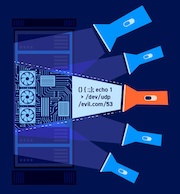ProfessionalCommunity Edition
Setting up your extension development environment manually
-
Last updated: December 16, 2025
-
Read time: 4 Minutes
You can set up your extension development environment to suit your preferences. This page covers the setup requirements and steps.
Note
If you want a faster setup, try our starter project. The project provides a ready-to-use template, so you can skip these steps and start coding immediately. For more information, see Setting up your extension development environment using the starter project.
Prerequisites
Before you begin:
- Download a Java Integrated Development Environment (IDE). An IDE provides features like auto-completion and syntax highlighting to help streamline development. We recommend using IntelliJ IDEA (Community Edition), a free Java IDE.
-
To use an LLM to help you write your extension, install or access your preferred model. This tutorial uses Claude Code, as we provide a
CLAUDE.mdfile designed specifically for it. You can easily adapt the instructions for use with other LLMs. For more information on Claude Code, see the Anthropic documentation.
Step 1: Create a new project
Set up a new project in your IDE with the following details:
Project type: Select Gradle or Maven. These build systems manage dependencies, simplifying project setup. If your IDE doesn't let you create a Maven or Gradle project directly, create a Java project and configure it to use Maven or Gradle as the build system.
Language: Java.
Gradle DSL: If you're prompted to choose a Gradle DSL, you can select either Groovy or Kotlin. This only impacts how you configure Gradle - not your Java extension code.
Java version: Use version 21. Depending on your IDE, this configuration option may be labeled as something like JDK, SDK or JRE. Burp only supports extensions written in Java 21 or lower.
Step 2: Add the Montoya API dependency
Once your project is set up, add the Montoya API to your project's dependencies.
Gradle configuration
To add the Montoya API in a Gradle project:
-
Go to the Gradle build file.
-
Add the following inside the
dependenciessection:-
For a Gradle DSL
build.gradlefile:compileOnly "net.portswigger.burp.extensions:montoya-api:LATEST-VERSION" -
For a Kotlin DSL
build.gradle.ktsfile:compileOnly("net.portswigger.burp.extensions:montoya-api:LATEST-VERSION")
-
-
Update
LATEST-VERSIONwith the latest Montoya API version number, available from the releases page on GitHub. -
Sync the Gradle changes.
Maven configuration
To add the Montoya API in a Maven project:
-
Go to the
pom.xmlfile. -
Add the following inside the
dependencyblock:<dependency> <groupId>net.portswigger.burp.extensions</groupId> <artifactId>montoya-api</artifactId> <version>LATEST-VERSION</version> </dependency> -
Update
LATEST-VERSIONwith the latest Montoya API version number, available from the releases page on GitHub. -
Update your Maven dependencies.
Step 3: Create your extension class
Create a Java class. This file will contain your extension code.
To create a new class file in your IDE:
Right-click the folder where you want to keep your code, typically
src > main > java.Select the option to create a new Java class. Depending on your IDE, this may be labeled as New > Java class or similar.
Enter a name for the class. For example,
Extension.
Step 4: Confirm correct setup
To check that the project is correctly configured, attempt to build a JAR file. If the build is successful, you're ready to start writing.
For instructions, see Building a JAR file.
[Optional] Step 5: Enable LLM support
You can use an LLM to help you write your extension. To support this, we provide a CLAUDE.md file that includes essential context for the model. You can use this file with Claude Code or any other LLM.
Note
Make sure to review and test any code suggested by your LLM, as it may not always produce correct or secure output.
Claude Code support
To use Claude Code to help you write your extension:
Download our CLAUDE.md file and supporting documentation from GitHub.
Add the
CLAUDE.mdfile to the root of your extension project folder.Create a
docsfolder in your extension project and add the supporting documentation inside it.Open a terminal and navigate to your extension project folder.
Run Claude Code using the following command:
claude.Prompt Claude to create some code for your extension.
Claude should automatically read the contents of the ExtensionTemplateProject folder, including the CLAUDE.md file, then create draft code for you to review. If you think it hasn't read the CLAUDE.md file, directly prompt it to do so before continuing.
Other LLM support
To use an LLM other than Claude Code to help you write your extension, directly prompt the LLM to read the CLAUDE.md file and supporting documentation in the docs folder, or provide their contents as part of your context window.
Next steps
You're ready to start writing your extension. For a tutorial, see Writing your first extension.


